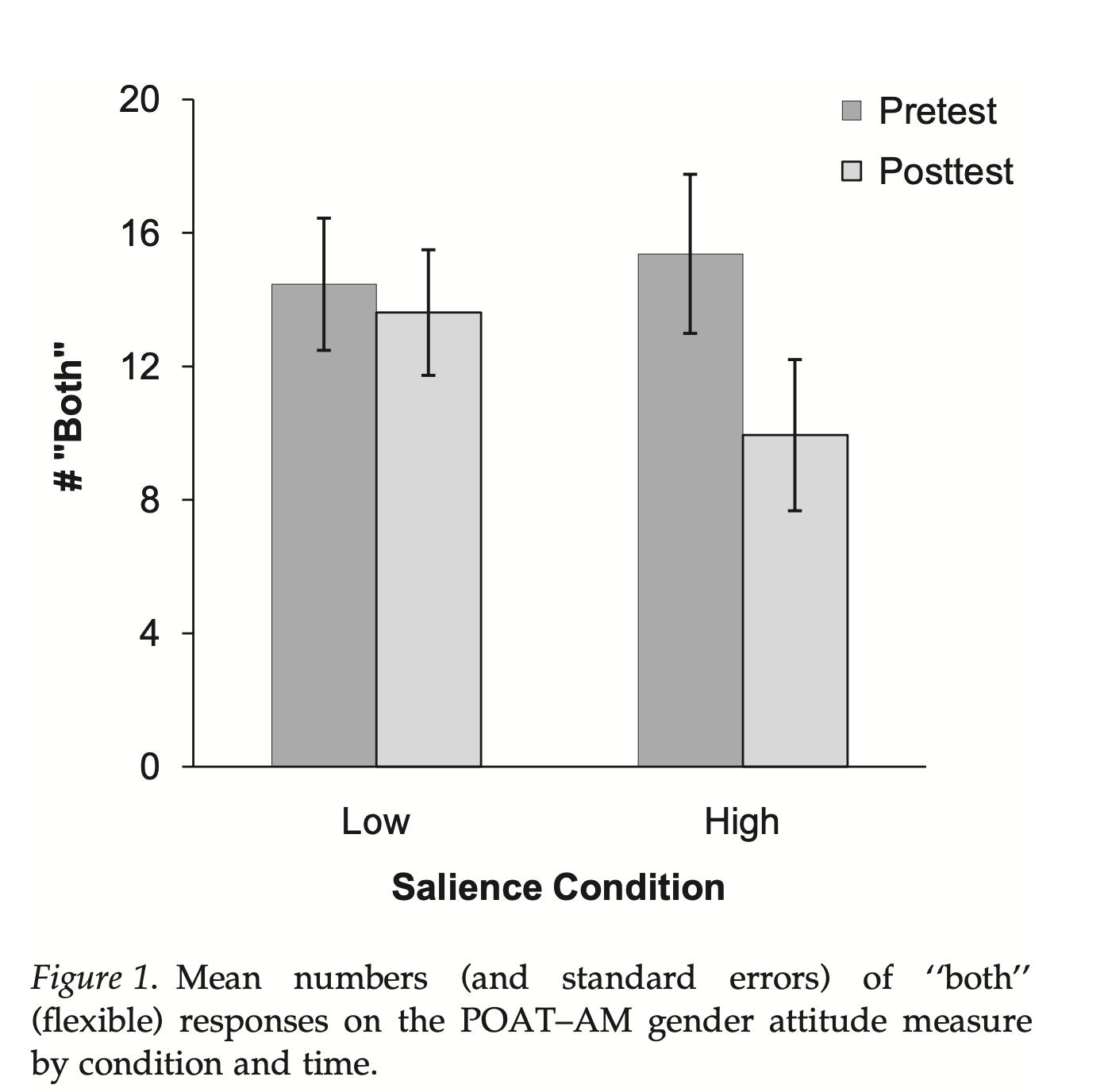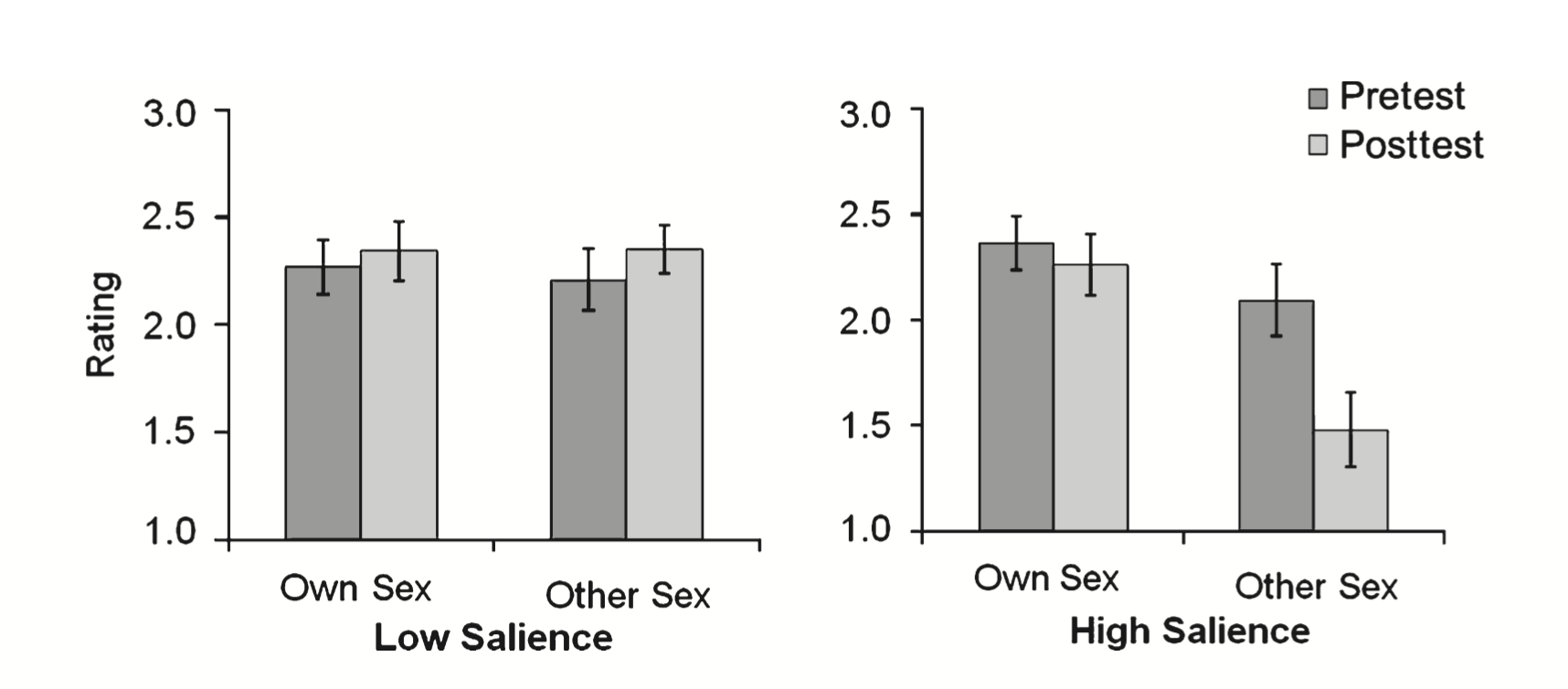Quiz: Hilliard and Liben
 Social Identity Theory can be used to explain the formation of stereotypes. The following study by Hilliard and Liben looks at how social category salience can lead to the development of stereotypes of the "out-group."
Social Identity Theory can be used to explain the formation of stereotypes. The following study by Hilliard and Liben looks at how social category salience can lead to the development of stereotypes of the "out-group."
Please read the study below and then answer the questions using complete sentences.
Hilliard and Liben (2010) carried out an experimental study to determine how social category salience may play a role on the development of stereotypes and inter-group behaviour in elementary school children.
The study took place at two preschools. The participants were 57 US children ranging from 3 years 1 month to 5 years 6 months. Each school had a roughly equal number of male and female children.
The study used a pre-test/post-test design. To begin, each child completed a gender attitude test (POAT-AM) to measure their “gender flexibility.” They were shown pictures of activities or occupations, and for each item asked if boys, girls, or both boys and girls ‘‘should’’ perform it. The test included 22 culturally masculine (e.g, be a firefighter), 20 culturally feminine (e.g., play with dolls), and 24 neutral (e.g., fly a kite) items by pointing to one of three cards to show who they believed should do the activity. The test calculated the number of ‘‘both men and women’’ responses. Lower numbers of ‘‘both’’ responses indicate a higher number of gender stereotypes.
A second measure was taken by observing their play to determine to what extent they played with same-sex vs opposite-sex peers.
The schools were randomly allocated to one of two conditions.
The high salience condition: Children were made aware of their gender by having them line up by sex, posting separate boys’ and girls’ bulletin boards, and the teachers’ use of gender-specific language (e.g., ‘‘I need a girl to pass out the markers’’ and ‘‘Good morning boys and girls’’). Teachers were instructed not to set up competitive activities between the boys and girls.
Low salience condition: Teachers were given no instructions about changing their behavior. This served as the control group.
It is important to note that in both preschools, it was the policy to avoid gendered language. Children in both conditions had experienced similar classroom environments prior to the study.
The study lasted for two weeks. The results can be seen below.

In this first graph, you can see that in the pre-test, both groups had a similar number of "both" responses when looking at images of activities/occupations on the POAT-AM gender attitude test. However, after the two-weeks of high gender salience, there was a significant decrease in the number of "boths" - meaning that the children had more gender stereotypes.
In the graph below, you can see how the amount of time playing with the opposite gender changed over a period of two weeks. In the low salience condition, there is no significant change. However, in the high gender salience condition, play with the "out-group" decreased significantly.

After two weeks, children in the high salience condition showed significantly increased gender stereotypes and decreased play with other-sex peers.
After the study, the children participated in a debriefing program administered by both teachers and experimenters. This debriefing program was included in an effort to counteract any possible increase in stereotyping and to help children understand prejudice and stereotypes.
Checking for understanding
What type of experiment is this? A true, quasi, or natural experiment? Explain your answer. (3 marks)
Which sampling technique was used? Explain how you can tell. (3 marks)
What is the independent variable in this study? Be sure to explain how it was manipulated. (3 marks)
Does this study have high or low internal validity? Justify your response. (3 marks)
Some might argue that this sample is biased. Explain why this may be true. (3 marks)
Explain one ethical consideration relevant to this study. (3 marks)

 IB Docs (2) Team
IB Docs (2) Team
